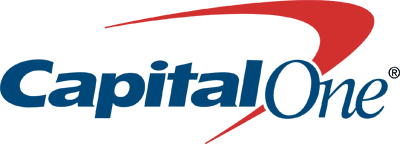
“The products we’re developing are bigger than one Agile team. For the teams to interact and plan together, we really needed SAFe as the foundation. It brings the practices and methodologies to coordinate multiple teams working on the same product at the same time.”
—Mike Eason, CIO, Commercial Banking
Challenge:
Capital One sought to be more responsive to the market, to transform software delivery to an agile framework, and to do it at scale.
Industry:
Financial Services
Results:
- Raised employee engagement by 15-20%
- Employed Agile and scaled agile across the enterprise; business and tech.
- Re-thinking the strategy on outsourced applications led to a drastic shift towards building internally
Best Practices:
- Establish communities of practice—Peer groups for Scrum Masters, RTEs, and System Teams enable these individuals to learn from each other.
- Support innovation—Commercial Banking leads Innovation Renovations similar to the Shark Tank TV show, where individuals present ideas for improvement.
- Recognize accomplishments—Commercial Banking calls out specific individuals for their efforts at PI events, and enhances morale and a sense of fun by requesting that people write what they appreciate about others on “walking billboards” on each other’s’ backs.
Introduction
One of the most widely recognized brands in America, Capital One is a diversified bank that offers a broad array of financial products and services to consumers, small businesses, and commercial clients. The company employs more than 47,000 people, and in 2016, reported revenue of $25 billion.

Since launching in the mid ‘90s, Capital One has been a disrupter. Smaller and nimbler than its competitors, it could react to market demands quickly. But as it grew, it lost some of that agility.
2010 began a transformation starting with the renaming of the Capital One’s IT groups to Capital One Technology. “This was more than a name change,” Capital One CIO Rob Alexander said. “It was a declaration that we would no longer be a traditional bank IT shop. From now that day on, we would be an organization working to transform Capital One into a technology company.”
In 2012, Capital One’s Commercial Banking group set out to be more responsive to customer and market needs. Knowing the organization relied on a lot of outsourced functions, the team set out on a transformational journey to bring IT development back in-house.
As the transformation picked up steam; it was clear, talent would be the lynchpin to execute against their development goals. To maximize the transformation, the following was always the question:
“How do we work in a way that allows great talent to do great work?” (Rob Alexander, CIO, Capital One)
The CIO of the company’s Commercial Banking Technology team, Mike Eason, explains the motivation for change. “Like many companies with outsourced technology, we knew we needed to gain control over our customer experience and become more nimble,” Eason says. “We took a step back and said, ‘we need to build our own technology to respond more rapidly to the market.’”
In 2013, the group began taking steps toward building an Agile workforce, however, Eason describes it as going through the motions. Development was largely still a waterfall approach. And while technology leaders were fully on board, opportunities remained to gain the full support of upper management.
SAFe: ‘A Well-Supported Framework with Clear Guidelines’
For the guidance it needed, Commercial Banking turned to the Scaled Agile Framework® (SAFe®).
“We looked at other frameworks for Agile, but SAFe offered a well-supported framework with clear guidelines, training, and experts to support us throughout the journey,” says Anand Francis, Director of Agile Coaching Services, Capital One Commercial Banking.
“The products we’re developing are bigger than one Agile team,” Eason adds. “For the teams to interact and plan together, we really needed SAFe as the foundation. It brings the practices and methodologies to coordinate multiple teams working on the same product at the same time.”
With the decision to go SAFe, support from the Capital One Commercial Operations Leader was a key factor, helping to influence large scale buy-in from other executives. Moving beyond rhetoric of “business and IT” alignment, Capital One business executives have agile teams dedicated to their products, services, and broader business strategies.
Goal: 100% Training
Prior to the first Program Increment (PI), all team members went through Agile 101 training. Today, half of the Release Train Engineers (RTEs) are SAFe Program Consultants (SPCs). Out of 50 Scrum Master roles, one quarter have achieved SAFe® Scrum Master (SSM) Certification while 10 percent are SPCs.
“Our goal is to have 50 percent of our Scrum Master population SAFe Scrum Master certified and 100% of our RTE population SAFe RTE certified by the end of the year,” Francis says.
Capital One now includes Agile, Design Thinking, and SAFe training courses in its Capital One University. Employees can choose from a number of SAFe courses, including Leading SAFe, SAFe Product Owner/Product Manager, and SAFe Release Train Engineer.
Empowering Teams
Capital One held its first Program Increment (PI) Planning meeting in 2013. In-house Agile coaches provided continuous guidance to Scrum Masters, RTEs, and Product Owners.
As Commercial Banking kicked off its first PI, a mindset shift was necessary for associates and to continue to move forward on two big themes: one, we as an organization needed to be great at delivering software; and two, we needed to be great at delivering data solutions that support how we make decisions for customers, how we interact with them, and how we make decisions internally. Christy Gurkin, the RTE on the first Agile Release Train (ART), found that while teams were initially resistant to the change, they soon began embracing the new approach.

“I noticed that people who normally would not have talked together were initiating conversations on their own, without me having to push it,” she says.
Eason also notes that, early on, teams lacked the autonomy to deliver independently because too many outside dependencies slowed down the process. Capital One addressed this by changing team structure. Instead of teams that focused on a single aspect, such as building an API, they transitioned to full-feature teams—equipping an entire team to deliver working software independently in a two-week sprint.
With this shift in team composition, and a greater focus on DevOps and continuous integration/continuous development, the company gained momentum.
Capital One additionally reduced team sizes down to seven or eight people. “By reducing team sizes, we improved team chemistry, which left them feeling like they had the autonomy to solve issues themselves,” Eason says.
Commercial Banking also took a major step in moving from project-centric budgeting to team-centric budgeting. “Before, no one wanted the project to end because then the resources would be distributed somewhere else,” Eason says. “Leadership and teams are now aligned to products, and make decisions on how much to invest in the products themselves instead of justifying every single project.”
As a result, teams are more nimble to ‘turn on a dime’ as needed, without the pressure of having to see a specific project to the end.
“Teams feel more beholden to the product they’re working on versus moving from project to project,” Francis adds.
A Transformation Guided by Teams
In addition to performing Inspect and Adapt after every PI, Commercial Banking designed and developed an Agile maturity assessment to help trains and teams understand where they are on their transformation journey. Once a quarter, they ask individuals to react anonymously to neutral statements across five areas: sustainability, value delivery, scaled agile, culture, and technical health.
“A lot of companies think they’re in one place, but they’re really in another,” says Greg Jaeger, Agile Coach. “Our goal was honest opinions and honest assessment because that’s the only way to help each member of the team, each team, each train, and each program get better—not only in being Agile or SAFe but in actual product delivery.”
Areas with low scores indicate the need for a discussion. In response, individuals at the Team and Program levels identify areas to improve for the next six sprints. Based on items chosen at those levels, Agile coaches formulate an Agile transformation path for every value stream.
Faster Delivery, Happier People

Today, Commercial Banking has 13 ARTs and seven Value Streams. Since deploying SAFe, the group has seen gains that benefit employees, partners, customers, and the organization as a whole:
Time-to-market— As we build out our physical campus, we have tried to create work spaces that enable that collaboration at the agile scrum team level, but also, we operate what is called the scaled agile framework. That implies that we need to be able to be effective in collaborating at both the individual team level, but also across multiple teams.
Taking an iterative approach to frequently deliver to production brought about efficiency and speed not previously seen. “We’re truly able to deliver working software into production at the end of every sprint,” Eason says. “What took us six months to complete before, now we might complete in a couple of months. And by bringing development in-house, we have working solutions much faster than any vendor partnership could deliver.”
Commercial Banking turned the ratio of vendor-created applications to those built in-house upside down.
Engagement—With employee engagement up 15-20 percent overall, morale and retention have improved.
Predictability—With each PI, Commercial Banking sees greater predictability in what it can deliver. PI planning plays a major role in setting expectations and encouraging follow-through.
Customer satisfaction—Eason says business partners prefer the new approach and would not want to go back to the old way of working. Likewise, the businesses that Commercial Banking serve have responded positively to the opportunity to see demos and progress along the way, rather than only having insight into fully completed projects.
“It’s been great to have clients with us on the design and test aspects of development,” Eason says.
The journey continues at Capital One, with Commercial Banking continuously refining after every PI. Success so far, aided by SAFe, greatly fuels that momentum.
“SAFe has enabled us to go to production in a safer and more scalable way more often than we would have normally,” Anand says.
“We are in that journey, and it is important that as the leadership team in technology,” says Capital One CIO Rob Alexander, “we are communicating to our whole organization that this is what excellence in software delivery looks like.”
Share:
Back to: All Case Studies
Suggested Case Study: Standard Bank


